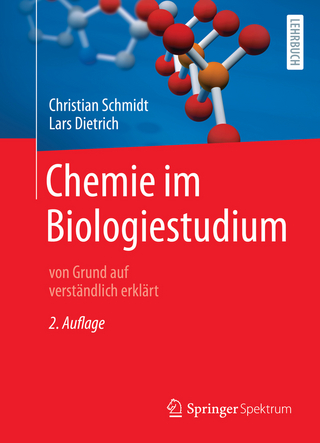
Protein Sensors of Reactive Oxygen Species, Part A: Selenoproteins and Thioredoxin
Academic Press Inc (Verlag)
978-0-12-182248-4 (ISBN)
Lester Packer received a PhD in Microbiology and Biochemistry in 1956 from Yale University. In 1961, he joined the University of California at Berkeley serving as Professor of Cell and Molecular Biology until 2000, and then was appointed Adjunct Professor, Pharmacology and Pharmaceutical Sciences, School of Pharmacy at the University of Southern California. Dr Packer received numerous distinctions including three honorary doctoral degrees, several distinguished Professor appointments. He was awarded Chevalier de l’Ordre National du Merite (Knight of the French National Order of Merit) and later promoted to the rank of Officier. He served as President of the Society for Free Radical Research International (SFRRI), founder and Honorary President of the Oxygen Club of California. He has edited numerous books and published research; some of the most cited articles have become classics in the field of free radical biology: Dr Packer is a member of many professional societies and editorial boards. His research elucidated - the Antioxidant Network concept. Exogenous lipoic acid was discovered to be one of the most potent natural antioxidants and placed as the ultimate reductant or in the pecking order of the “Antioxidant Network regenerating vitamins C and E and stimulating glutathione synthesis, thereby improving the overall cellular antioxidant defense. The Antioxidant Network is a concept addressing the cell’s redox status. He established a world-wide network of research programs by supporting and co-organizing conferences on free radical research and redox biology in Asia, Europe, and America. Helmut Sies, MD, PhD (hon), studied medicine at the universities of Tübingen, Munich, and Paris. He was the professor and chair of the Institute for Biochemistry and Molecular Biology I at Heinrich-Heine-University Düsseldorf, Germany, where he is now professor emeritus. He is a member of the German National Academy of Sciences Leopoldina and was the president of the North Rhine-Westphalian Academy of Sciences and Arts. He was named ‘Redox Pioneer’; was the president of the Society for Free Radical Research International (SFRRI). Helmut Sies introduced the concept of “Oxidative Stress in 1985, and was the first to reveal hydrogen peroxide as a normal constituent of aerobic cell metabolism. His research interests comprise redox biology, oxidants, antioxidants, micronutrients.
Section I: Selenoproteins
[1]: Selenoprotein Biosynthesis: Purification and Assay of Components Involved in Selenocysteine Biosynthesis and Insertion in Escherichia coli
[2]: Selenocysteine Insertion Sequence Element Characterization and Selenoprotein Expression
[3]: Transfer RNAs That Insert Selenocysteine
[4]: Purification and Analysis of Selenocysteine Insertion Sequence-Binding Protein 2
[5]: Nonsense-Mediated Decay: Assaying for Effects on Selenoprotein mRNAs
[6]: Novel Selenoproteins Identified from Genomic Sequence Data
[7]: Semisynthesis of Proteins Containing Selenocysteine
[8]: Mammalian Selenoprotein Gene Signature: Identification and Functional Analysis of Selenoprotein Genes Using Bioinformatics Methods
[9]: Estimation of Individual Types of Glutathione Peroxidases
[10]: High-Throughput 96-Well Microplate Assays for Determining Specific Activities of Glutathione Peroxidase and Thioredoxin Reductase
[11]: Selenoprotein P
[12]: Iodothyronine Deiodinases
[13]: Expression and Regulation of Thioredoxin Reductases and Other Selenoproteins in Bone
[14]: Selenoprotein W
[15]: Genetic and Functional Analysis of Mammalian Sep15 Selenoprotein
[16]: Selenocysteine Lyase from Mouse Liver
[17]: Selenocysteine Methyltransferase
[18]: Phospholipid–Hydroperoxide Glutathione Peroxidase in Sperm
[19]: In Vivo Antioxidant Role of Glutathione Peroxidase: Evidence from Knockout Mice
[20]: Recombinant Expression of Mammalian Selenocysteine-Containing Thioredoxin Reductase and Other Selenoproteins in Escherichia coli
[21]: Mammalian Thioredoxln Reductases as Hydroperoxide Reductases
[22]: Tryparedoxin and Tryparedoxin Peroxidase
[23]: Trypanothione and Tryparedoxin in Ribonucleotide Reduction
[24]: Selenium- and Vitamin E-Dependent Gene Expression in Rats: Analysis of Differentially Expressed mRNAs
Section II: Thioredoxin
[25]: Overview
[26]: Thioredoxin and Glutaredoxin Isoforms
[27]: Mammalian Thioredoxin Reductases
[28]: Mitochondrial Thioredoxin Reductase and Thiol Status
[29]: Protein Electrophoretic Mobility Shift Assay to Monitor Redox State of Thioredoxin in Cells
[30]: Recycling of Vitamin C by Mammalian Thioredoxin Reductase
[31]: Thioredoxin Cytokine Action
[32]: Identification of Thioredoxin-Linked Proteins by Fluorescence Labeling Combined with Isoelectric Focusing/Sodium Dodecyl Sulfate-Polyacrylamide Gel Electrophoresis
[33]: Thioredoxin and Mechanism of Inflammatory Response
[34]: Redox State of Cytoplasmic Thioredoxin
[35]: Thioredoxin, Thioredoxin Reductase, and Thioredoxin Peroxidase of Malaria Parasite Plasmodium falciparum
[36]: Human Placenta Thioredoxin Reductase: Preparation and Inhibitor Studies
[37]: Classification of Plant Thioredoxins by Sequence Similarity and Intron Position
[38]: Ferredoxin-Dependent Thioredoxin Reductase: A Unique Iron–Sulfur Protein
[39]: Plant Thioredoxin Gene Expression: Control by Light, Circadian Clock, and Heavy Metals
[40]: Thioredoxin Genes in Lens: Regulation by Oxidative Stress
[41]: Thioredoxin Overexpression in Transgenic Mice
[42]: Multiplex Reverse Transcription-Polymerase Chain Reaction for Determining Transcriptional Regulation of Thioredoxin and Glutaredoxin Pathways
[43]: Redox Regulation of Cell Signaling by Thioredoxin Reductases
Author index
Subject index
| Erscheint lt. Verlag | 12.3.2002 |
|---|---|
| Reihe/Serie | Methods in Enzymology |
| Verlagsort | San Diego |
| Sprache | englisch |
| Maße | 152 x 229 mm |
| Gewicht | 830 g |
| Themenwelt | Naturwissenschaften ► Biologie ► Biochemie |
| ISBN-10 | 0-12-182248-6 / 0121822486 |
| ISBN-13 | 978-0-12-182248-4 / 9780121822484 |
| Zustand | Neuware |
| Haben Sie eine Frage zum Produkt? |
aus dem Bereich


